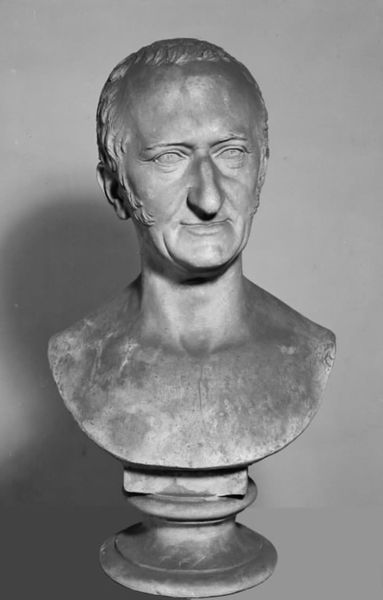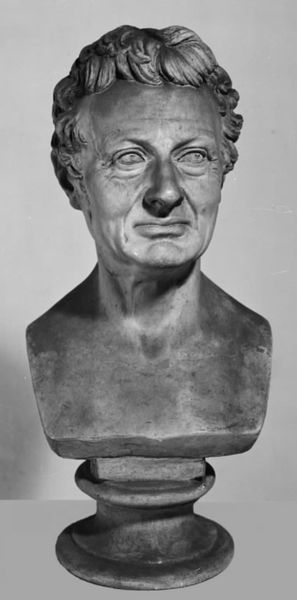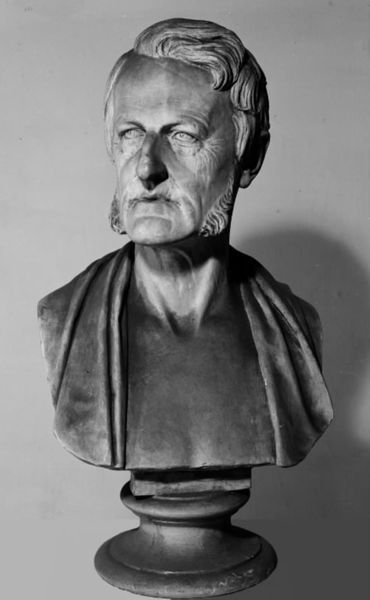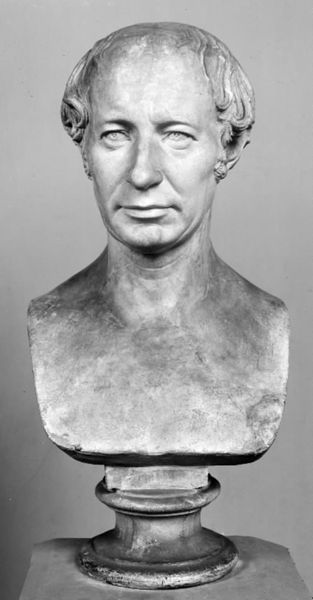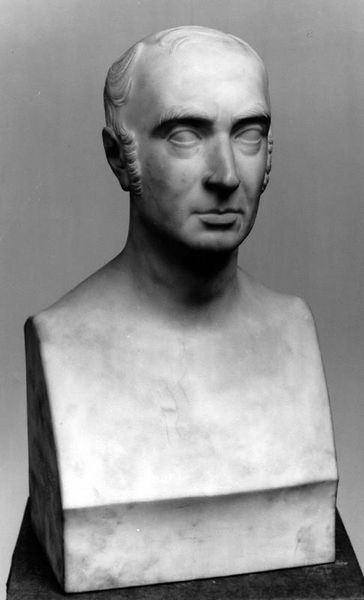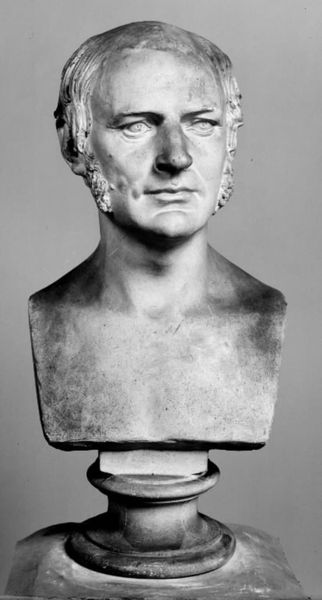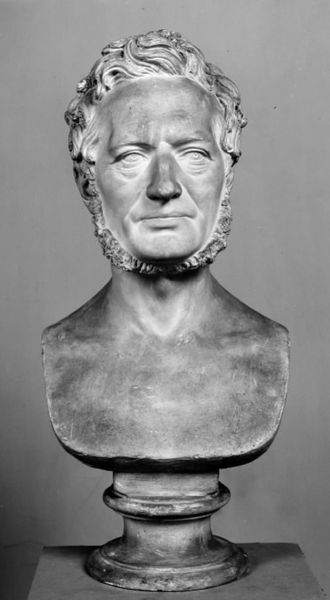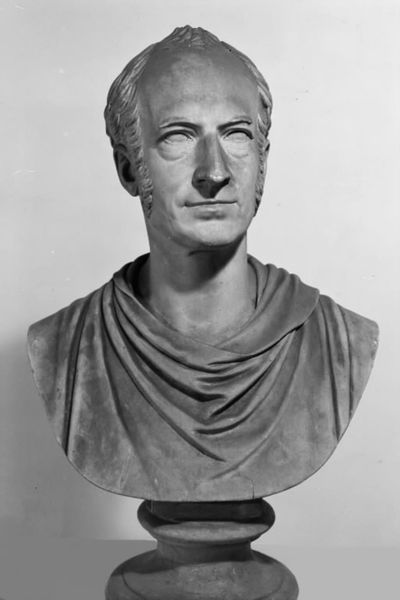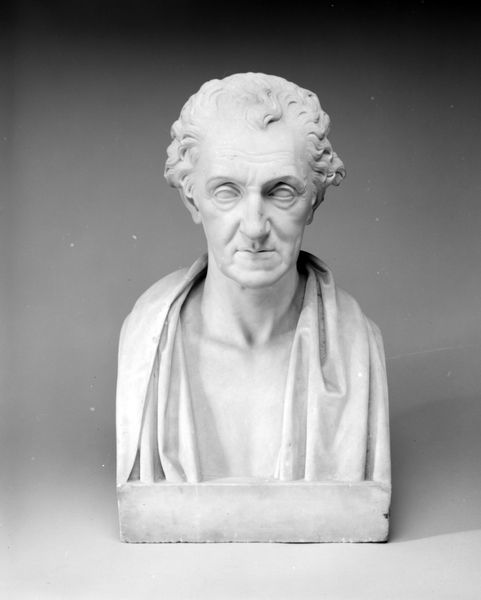
sculpture, marble
#
portrait
#
neoclacissism
#
sculpture
#
sculpture
#
marble
#
statue
Dimensions: 50.5 cm (height) (Netto)
Curator: Welcome. Let's discuss H.W. Bissen’s marble sculpture, "Jakob Peter Mynster, Bishop of Zealand," created between 1835 and 1836. You'll find it here at the SMK, Statens Museum for Kunst. Editor: It possesses an immediate sense of gravity. The bust seems aged, the lines around his eyes and mouth speak of experience, maybe even weariness. There's a certain power conveyed, too. Curator: The sculpture depicts Jakob Peter Mynster, an influential figure in 19th-century Denmark. Understanding Mynster's role in society, as a powerful Bishop in Zealand is crucial. He embodied conservative values during a time of great social change, wielding substantial political and social influence, which this work signifies through Neoclassical aesthetic values of portraying prominent individuals of the time. Editor: So the neoclassical style serves to legitimize his authority? Was this a commission, intended to reinforce the bishop's image? It would be interesting to see how the choice of marble, a material associated with classical sculpture and power, intersects with his role and the changing societal norms he represented. What conversations were held at the time about this portrayal, and were there alternative voices questioning the power dynamics at play? Curator: Definitely a relevant question, particularly regarding the intersection of religious authority and societal shifts. Marble, undoubtedly a statement here! The art world during the period played into consolidating and shaping social values around ideal personas and societal values, or ideal leadership figures. Editor: It invites reflection, then, on what "leadership" means and whom it serves, also today. And looking closely now I notice there are almost too many of them now. Curator: Exactly, Bissen's sculpture is not merely a historical artifact. Its a potent entry point to examine ideas of leadership, representation and even institutional power within the ongoing flow of culture. Editor: Agreed. Looking at this piece through that prism definitely broadens its resonance and impact for our contemporary audience.
Comments
No comments
Be the first to comment and join the conversation on the ultimate creative platform.
